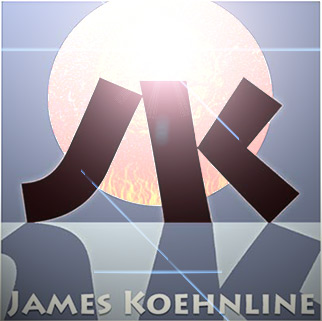About Me
For Life, Liberty, Love and Levity.
I began thinking of myself as an artist around age 14. My fatherÔø‡Ôø‡Ôø‡s art collection and library inspired my early work. He was a collector of surrealist prints and books, especially the works of Max Ernst. Major areas of focus in his library were William Blake, fantastic art through the centuries, modern art in general, James Joyce and the full gamut of science fiction.
1970s and 80s
In the 1970s and 80s, as a painter, printmaker and experimental film-maker, I associated with Franklin RosemontÔø‡Ôø‡Ôø‡s Chicago Surrealist Group for a time, then explored other approaches to the relationship between art and politics. By the mid-1980s my primary medium was cut-and-paste collage/xerography, and I was deeply involved in the correspondence art movement, the Ôø‡Ôø‡Ôø‡zine sceneÔø‡Ôø‡Ôø‡ and the Axe Street Arena. The Arena was an overtly political alternative gallery and performance space I ran in Chicago with a few friends. Through this work I became acquainted with many artists and engaged in diverse collaborations in collage, assemblage, installations and performance art.
The most enduring of these creative partnerships has been with radical poet-philosopher, Hakim Bey (aka Peter Lamborn Wilson). Through him, I have been part of Autonomedia, a publishing collective based in Brooklyn. It was originally formed to publish its Foreign Agents Series. The series included translations of French philosophers such as Virilio, Guattari, Baudrillard, Debord, Deleuse, and Foucault. M.I.T. Press bought the series, but Autonomedia continued. For my part, I designed book covers and made illustrations, I also conceived and co-edited the history anthology, Gone to Croatan: The Origins of Drop-out Culture in North America; I published a book of my collages (Magpie Reveries); and I created a wall calendar. The calendar, The Autonomedia Calendar of Jubilee Saints, celebrates a secular Ôø‡Ôø‡Ôø‡saintÔø‡Ôø‡Ôø‡ for each day of the year. It proved popular and is now in its 16th year of publication.
1990s
In the 1990s, I concentrated on ideas about Time and our relation to Time. For two years, I published The Mad FarmerÔø‡Ôø‡Ôø‡s Jubilee Almanack. It was a quarterly 'zine published during the run-up to the years 2000 to 2001. In it, we explored past and current millenarian movements, the ideologies embedded in diverse calendars, the ramifications of our transition from a celestial time standard to the nanosecond accuracy of atomic clock time, etc. Much of my visual art in this period dealt with these themes.
In 1995 I made the transition to digital art. At first I used the computer merely to extend the possibilities of collage, but soon began to explore the deeper ramifications of the emerging digital, networked, global culture, and the human/computer interface. Drawing on past studies, I began to consider the ways in which, rather than being a possible future, we are already cyborgs living in a vast simulation, and have been for some time. Now we are finding new means of expression, moving beyond passive consumption Ôø‡Ôø‡Ôø‡ hacking, interactive gaming, Youtube, P2P, social networking sites, etc. My own involvement in these things has been focused on a single social networking site for artists and writers, deviantArt, where I have posted nearly 1,000 works, and am in contact with artists all over the world.
Now
For the last year I have been creating works using a combination of digital paint (raster graphics), some photography, and ready-made 3D models, huge numbers of which are freely available as raw material for building virtual worlds in cyberspace. The works are digital 3D collages/assemblages, drawing on the textural explorations of my paintings and monoprints, as well as my photography and appropriated imagery, in creating surface maps (texture, bump and transparency maps) for these generic models, which are then assembled/combined and posed under virtual lights and captured by virtual cameras. I have taken as my theme, Lost Books Ôø‡Ôø‡Ôø‡ rare, forgotten, magical, impossible, imaginary books.
My inspirations are many, including Xu BingÔø‡Ôø‡Ôø‡s Book from the Sky, CornellÔø‡Ôø‡Ôø‡s boxes, BorgesÔø‡Ôø‡Ôø‡ short stories and Peter GreenawayÔø‡Ôø‡Ôø‡s film, ProsperoÔø‡Ôø‡Ôø‡s Books. I am interested in the parallels in our own time with the first century of printed, mass-produced books and ephemera, and the rise of literacy. Books from that period are called Incunabula (Ôø‡Ôø‡Ôø‡in the cradleÔø‡Ôø‡Ôø‡;). We are still in the cradle of the transition from Gutenberg Galaxy to Digital Dataverse, approaching an event horizon where accelerating technological change renders the future unimaginable, as AI, genetic engineering and nanotechnology combine and mutate in ways we cannot predict. And so, Ôø‡Ôø‡Ôø‡Lost Books,Ôø‡Ôø‡Ôø‡ in that we are moving beyond the culture of the book at an accelerating pace, but also impossible books that pretend to some reality in the simulation that is Ôø‡Ôø‡Ôø‡cyberspace,Ôø‡Ôø‡Ôø‡ symbolic of the crazy quilt, bottom-up, vernacular culture that is taking root in this new world. I have also started the Lost Book Club at deviantArt. There are about fifty members and 300 works in the club Ôø‡Ôø‡Ôø‡libraryÔø‡Ôø‡Ôø‡ at present. I would like to mount a show of prints in the brick-and-mortar world, and/or publish a book of lost books. It seems that my childhood experience of my fatherÔø‡Ôø‡Ôø‡s library still exerts a powerful influence.

